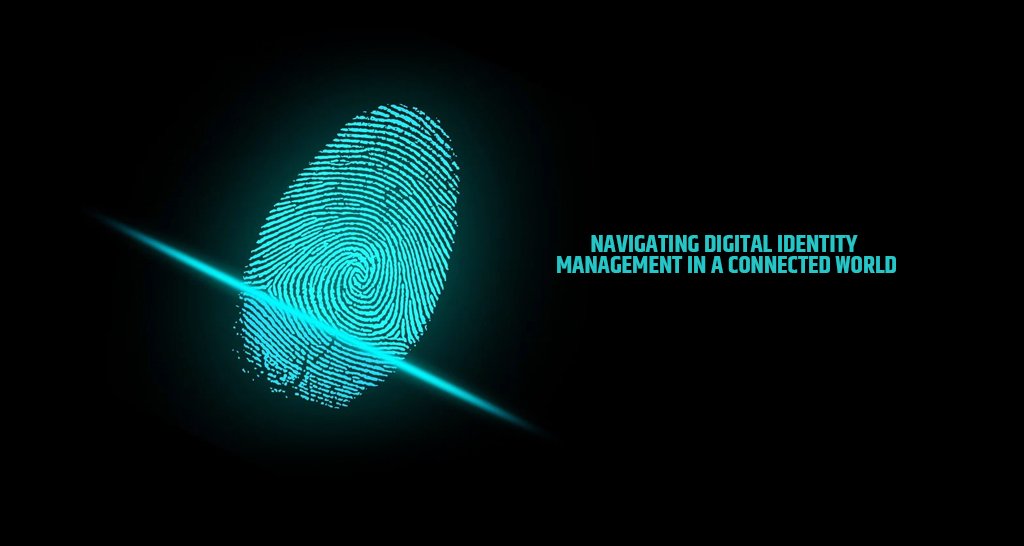Understanding Digital Identity
In the context of modern technology, digital identity refers to the online representation of an individual or organization. It encompasses a wide array of components including personal information, user-generated content, online behaviors, and digital footprints that an individual leaves behind while interacting with various platforms. Personal information typically includes data such as names, addresses, emails, and contact numbers, which are often shared during online registrations or social media interactions.
Additionally, online behaviors—ranging from browsing history to purchasing patterns—play an integral role in shaping one’s digital identity. These behaviors are documented through cookies and tracking mechanisms employed by websites, which collect data to enhance user experiences or provide tailored advertisements. Furthermore, social media profiles contribute significantly to how digital identity is perceived, as these platforms serve as reservoirs for personal expressions, interests, and connections. Profiles on LinkedIn, Facebook, Twitter, and Instagram, for example, not only reflect an individual’s interests and hobbies but also their professional achievements and social interactions.
The significance of digital identity has escalated in our interconnected world. For individuals, it encompasses privacy concerns, personal safety, and authenticity, as digital identities can be susceptible to impersonation or misuse. Poor management of digital identity may result in reputational harm or hinder one’s opportunities in employment or personal relationships. For organizations, a well-established digital identity can enhance brand visibility, foster customer engagement, and drive marketing efforts. However, it also raises questions about data protection and the ethical handling of user information. Thus, effectively navigating the complexities of digital identity is crucial for both individuals and organizations in maintaining security and integrity in the digital arena.
Challenges of Digital Identity Management
The landscape of digital identity management is fraught with various challenges that organizations and individuals must navigate. One of the foremost concerns is privacy. As users increasingly engage with online platforms, their personal information is often collected, processed, and stored. This raises significant questions regarding how data is used, who has access to it, and how well it is protected from unauthorized access. Privacy regulations, such as the GDPR, have been introduced to address these concerns, yet compliance remains a complex and sometimes burdensome task for many entities.
Data breaches represent another major risk in the realm of digital identity management. High-profile breaches have demonstrated that even well-established organizations can be susceptible to cyberattacks, leading to the compromised personal information of countless individuals. These breaches not only undermine trust but also expose individuals to identity theft, where malicious actors exploit stolen data to impersonate victims. The financial repercussions and reputational damage that ensue from such incidents can be devastating for organizations.
Furthermore, ensuring secure access to online services is a persistent challenge. With countless platforms requiring various forms of authentication, users often struggle to manage multiple usernames and passwords effectively. Solutions such as multi-factor authentication are gaining traction, yet they add layers of complexity that can deter users from adopting them. Additionally, the rapid evolution of technology, including biometrics and blockchain, brings both opportunities and challenges. Organizations must stay abreast of technological advancements while also adapting to evolving regulations that govern digital identity management.
Collectively, these challenges highlight the intricacies of managing digital identity in a connected world. Individuals and organizations must remain vigilant and proactive to ensure privacy, security, and compliance in an ever-changing digital environment.
Best Practices for Managing Digital Identity
In today’s interconnected environment, effective management of digital identity is imperative for personal and organizational safety. One of the essential strategies for safeguarding digital identity is the use of strong passwords. Passwords should be complex, combining upper and lower case letters, numbers, and special characters. Additionally, employing unique passwords for different accounts helps mitigate the risk of a security breach. Regularly updating these passwords further enhances their effectiveness in protecting sensitive information.
Another critical measure is the utilization of two-factor authentication (2FA). This additional layer of security requires not just a password but also a second form of verification, such as a text message or authentication app code. By enabling this functionality on accounts where it is available, users significantly reduce their chances of unauthorized access, adding an extra layer of protection for their digital identity.
Conducting regular privacy audits is also vital. Evaluating the permissions granted to applications and the information shared on social platforms can provide insights into potential vulnerabilities. This practice encourages individuals to reassess their privacy settings and ensure they are in line with their current preferences and security needs.
Being conscious of one’s digital footprint is equally important. Each online action contributes to an individual’s digital identity, and understanding the implications of these actions helps in maintaining privacy. Digital literacy plays a crucial role in this context, empowering individuals to navigate privacy settings effectively and make informed decisions about their online presence.
Ultimately, implementing these best practices leads to better management of digital identity, fostering a safer online experience. Remaining vigilant and proactive is essential to effectively protect one’s digital persona in an ever-evolving landscape.
The Future of Digital Identity Management
The landscape of digital identity management is rapidly evolving, driven by advancements in emerging technologies and a growing emphasis on security and privacy. As society becomes increasingly interconnected, the new challenges related to identity verification and management necessitate innovative solutions. Among these solutions, blockchain technology stands out as a promising framework due to its decentralized nature, which could enhance trust and minimize the risk of identity fraud. By allowing individuals to have greater control over their digital identities, blockchain can facilitate secure transactions and ensure that personal information is shared only with authorized parties.
Another technology transforming digital identity management is artificial intelligence (AI). AI algorithms can analyze vast quantities of data to identify patterns and detect unusual behavior, thereby aiding in the verification of identities and enhancing security protocols. This capability not only streamlines the authentication process but also allows for real-time monitoring and response to potential threats. Additionally, AI-driven solutions can reduce the burden of manual data entry and improve the overall user experience by making identity verification processes more intuitive and efficient.
Furthermore, the trend towards decentralized identity solutions underscores the importance of user-centric models in digital identity management. With the rise of self-sovereign identities (SSI), individuals can manage their own credentials without relying on centralized authorities. This shift aligns with global discussions on data privacy and consent, highlighting the need for frameworks that empower users in a connected environment.
International regulations and standards will also play a significant role in shaping the future of digital identity management. As various jurisdictions implement privacy laws and guidelines, organizations must adapt to comply with these regulations, ensuring that digital identity systems are secure and trustworthy. In conclusion, by leveraging technologies such as blockchain and AI, along with fostering decentralized solutions, the future of digital identity management promises to be more secure, user-centric, and resilient against emerging threats.



